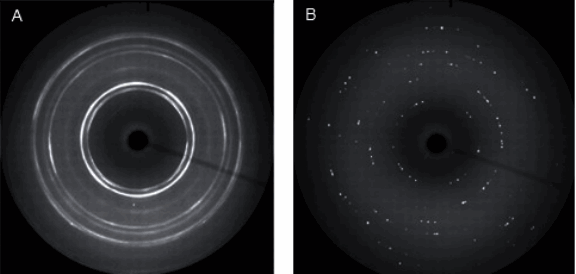A new family of superconductors has been discovered by an international research team lead by a group from Max Planck Institute for Chemistry, Germany, (M. Eremets, I, Trojan, S. Medvedev), and including researchers from University of Saskatchewan. This research could eventually lead to the design of better superconducting materials for a wide variety of industrial uses.
The team carried out their research using the 13-ID-D beamline at the Argonne Advanced Photon Source. Beamline 13-ID-D is operated by the GeoSoilEnviro group of the University of Chicago’s Center for Advanced Radiation Sources (GSECARS).
In an article published in the journal Science, the team notes that it has produced the first experimental proof that superconductivity can occur in hydrogen compounds known as molecular hydrides.
The Max Planck Institute group discovered superconductivity in the hydrogen compound silane and solved its structure, while the University of Saskatchewan group provided theoretical support of stoichiometry of the studied samples, by calculating of the Raman spectra.
“Our research in this area is aimed at improving the critical temperature for superconductivity so that new superconductors can be operated at higher temperatures. We showed that if you put hydrogen in a molecular compound and apply high pressure above one million atmospheres, you can get superconductivity. Validation of this hypothesis and understanding of the mechanism are initial steps for design of better superconducting materials,” say the authors.
It has long been hypothesized that hydrogen, the simplest of the elements, may have superconductive properties if it is compressed into a very dense solid form. Though many researchers have tried using pure hydrogen, they have not been able to achieve the necessary hydrogen density because very high static pressures are required. Instead of using pure hydrogen, the authors compressed hydrogen-rich molecules (hydrides). They were able to reach the necessary density of hydrogen at much lower pressure than with pure hydrogen due to “chemical precompression” of hydrogen by silicon atoms proposed by Prof. N. Ashcroft. This achievement will lead to greater understanding on the fundamental nature of superconductivity.
Contact: *[email protected]
See: M. I. Eremets*, I. A. Trojan, S. A. Medvedev, J. S. Tse, and Y. Yao, "Superconductivity in Hydrogen Dominant Materials: Silane," Science319, 1506 (2008); DOI: 10.1126/science.1153282
The original version of this news release can be found at: https://research.usask.ca/?id=779
X-ray diffraction measurements were carried out at the Sector 13 insertion device beamline under grant GUP7569 and GUP8324. Deutsche Forschungsgemeinschaft (DFG) grant ER 539/1-1 provided partial financial support. GSECARS is supported by the National Science Foundation, Earth Sciences (EAR-0622171);and Department of Energy, Geosciences (DE-FG02-94ER14466). Use of the Advanced Photon Source was supported by the U. S. Department of Energy, Office of Science, Office of Basic Energy Sciences, under Contract No. DE-AC02-06CH11357.
Argonne National Laboratory brings the world's brightest scientists and engineers together to find exciting and creative new solutions to pressing national problems in science and technology. The nation's first national laboratory, Argonne conducts leading-edge basic and applied scientific research in virtually every scientific discipline. Argonne researchers work closely with researchers from hundreds of companies, universities, and federal, state and municipal agencies to help them solve their specific problems, advance America 's scientific leadership and prepare the nation for a better future. With employees from more than 60 nations, Argonne is managed by UChicago Argonne, LLC for the U.S. Department of Energy's Office of Science.

